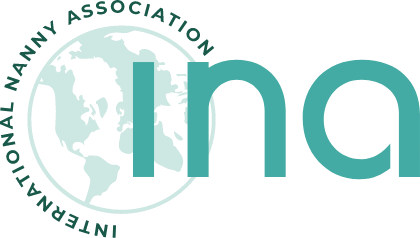New Australian In-home Child Care
By: Louise Dunham
I have been asked to comment on the Australian federal government’s ‘New Child Care Package’ which took effect on July 2nd. I’ve written about this before and flagged the fact that there are aspects of the package relating to in-home care that I agree with, and some that I don’t. Now that the new system is in place, some effects of the change are hitting home quite quickly.
On the plus side, Placement Solutions, a 30-year-old company with 19 years as an inaugural in-home childcare agency has been granted more government-funded childcare places. I also applaud (with two reservations that I’ll come to) the fact that all nannies (in-home educators) working with government-funded clients must now be working towards an accredited qualification.
On the negative side, a number of issues stem from the short timeframe over which the new system has been designed and implemented, particularly with respect to in-home care. There are also reductions in the amount and availability of funded support, especially for those in crisis or on low incomes. Other concerns are the ongoing lack of understanding of in-home care and its role in the wider childcare industry, as well as the continued confusion and lack of clarity regarding the legality of nannies working as independent contractors. This last point continues to leave an unlevel playing field for agencies like ours that insist on employing and paying our nannies legally.
In Australia, some Nanny/Educators work through government-approved In-home Child Care Agencies where the parents are subsided for part of their childcare costs. This is a sector of the greater Childcare Rebate scheme where the rebates vary depending on your assessed income. Agencies that are not government approved and nannies working privately do not attract the rebates. Being government-approved means the Agency must adhere to both the Long Form Funding Agreement and the National In-home Child Care Standards.
We have seen significant effects of the new package from day one. Under the new system, the reimbursement available for in-home care is capped at $25.48 per hour. At our previous fee levels, this reimbursement makes it impossible to pay our nannies at even the minimum wage, especially when you add in the cost of legal entitlements such as superannuation, WorkCover and overtime, not to mention the overheads of running our agency including the costs of recruiting and vetting new nannies. Maintaining our fees at a viable level has meant that the out-of-pocket costs for most of our government-funded clients have doubled or more, which has made in-home care unaffordable for a large number of those clients.
Second, we have lost a number of our long-term nannies with many, many years of experience. These are nannies who aren’t in a position to ‘go back to school’ and work towards a formal qualification given the time and cost involved. While, as I said, I am pleased to see qualification (or working towards one) as a prerequisite from now on, the way this requirement has been introduced has been somewhat blunt. There is no phase-in period, no meaningful recognition of experience, and no support (financial or otherwise) for nanny/educators who will need to pay for a course and take time out of their weeks to study. There is also no provision for carers to earn more once they gain a qualification. This has essentially left our experienced nannies in the position of being required to invest in a qualification for no reward other than the right to keep working. Sadly, some have decided their only option is to retire.
The third big effect of the new package is its effect on low-income earners who are not able to perform some form of recognised ‘activity’, i.e. working, volunteering or studying. These people used to be assisted through a separate welfare scheme. Now, they are eligible for half as many hours of care as under the previous scheme (amounting to less than a day a week) and they are required to make a financial contribution to that care no matter how dire their financial circumstances.
This last point touches on an overall concern I have with the new scheme: it seems to more focused on being a ‘get back to work’ package than a child care package. Paradoxically, at the higher-earnings end of the scale, the package actually provides a disincentive for mothers to go back to work. The introduction of a benefit, cut off for those with household incomes above $350,000 and a capped benefit for households earning half that, effectively imposes a not insubstantial tax on motherhood for higher earners.
Only time will tell the full impact of the new childcare package in Australia and elsewhere. Whilst we look to New Zealand and the Scandinavia countries who lead the way in quality childcare Australia can be justly proud that we have moved to a recognition and insistence on all child carers being qualified. We will work to ensure that specific nanny modules are included in the qualification.
And while we have a number of concerns, you can rest assured that Placement Solutions will continue to provide the same high quality of service as we always have, while also employing and training the best nannies we can find.
Breakthrough news: Placement Solutions has been working with the Australian Taxation Office for some years to provide a clear understanding to parents that in “most cases they are in fact the employees of the nannies”. FairWork Australia will now look at individual case studies and produce fact sheets for parents and nannies. This is groundbreaking because many nannies still work for cash or erroneously in most cases as independent contractors.
The Interim Standards are here: https://docs.education.gov.au/system/files/doc/other/interim_standards_for_ihc.pdf
Louise Dunham is the owner of Placement Solutions, a 30-year-old Agency; Just Family Payroll and Nurture Training College. She is the author of State of the Nanny and spent five years on the INA Board as VP and Ethics Chair.
